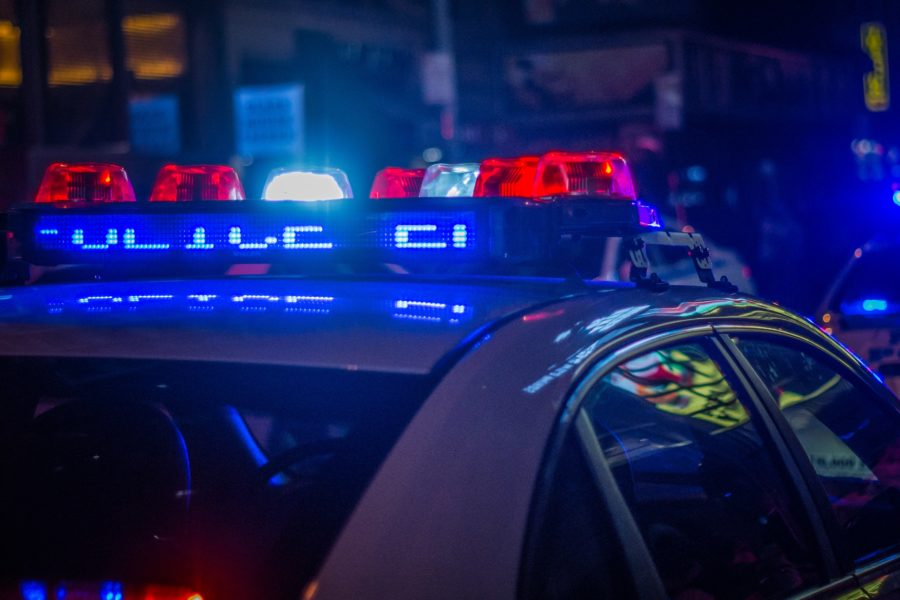
They remain two of the great unsolved mysteries in American history.
Both have strong connections to organized crime.
And both were back in the news big time late last year.
The assassination of John F. Kennedy and the disappearance of James R. Hoffa got headlines and media attention as 2021 drew to a close. A documentary by Oliver Stone refocused attention on the murder of JFK and raised new and troubling questions about who was behind that hit and why. And a landfill in New Jersey once again became the focus of an FBI search for the body of Jimmy Hoffa.
There is little dispute about the mob’s involvement in the Hoffa case.
The one-time head of the International Teamsters Union was angling to regain the top spot in that organization when he disappeared on July 30, 1975.
Hoffa thought he was going to lunch that day with Anthony “Tony Pro” Provenzano, a mob leader with whom he had had a falling out. The meeting was set for the Machus Red Fox restaurant just outside of Detroit.
Provenzano, head of North Jersey Teamsters Local 560 and a capo in the Genovese crime family was still back East when Hoffa pulled into the restaurant parking lot.
Tony Pro had an airtight alibi. He was hundreds of miles from Detroit.
Hoffa was last seen getting into a car in the parking lot of the restaurant and being driven away.
Underworld folklore and FBI investigations have fueled speculation ever since. What is sometimes lost in the story of the disappearance is the overarching issue of labor racketeering that is at the heart of the case.
Organized crime and organized labor have often been in bed together.
The Teamsters, the Laborers Union, the Hotel and Bartenders Union and the Longshoremen’s Union have long and tainted histories tied to the mob. The classic movie On the Waterfront from 1954 captured the mob’s control of dockworkers in New Jersey. A dozen years earlier, in real life, Lucky Luciano was sprung from prison after arranging for longshoremen to serve as the eyes and ears of U.S. Naval Intelligence along the docks in New Jersey and New York in an effort to thwart German saboteurs during World War II.
Little Nicky Scarfo’s control of Bartenders Union Local 54 was a big part of his power base at the dawn of casino gambling in Atlantic City in the late 1970s. And there are many who believe Las Vegas was only able to become the glittering gambling mecca it is today because of the Teamsters Central States Pension Fund.
Millions of dollars were lent to mob-backed developers in the 1960s and 1970s to build luxurious new casino palaces in the desert. The mob’s control of a half dozen casino-hotels and its monthly skim of tens of thousands of dollars were all part of the labor racketeering game. Mob families from Chicago, Kansas City, Milwaukee and Cleveland shared in the skim which amounted to millions of dollars in untaxed profits.
Hoffa was a big part of that, but after being sentenced to 13 years in prison in 1967 for jury tampering, fraud and conspiracy he was replaced by Frank Fitzsimmons who developed an even cozier relationship with the wiseguys. Hoffa’s attempt to bump Fitz aside and take back the International Teamsters Union after his unexpected release from prison in 1971 was a bold gambit that cost him his life.
Under the terms of a sentence commutation granted by then-President Richard Nixon (and allegedly paid for with a $500,000 bribe), Hoffa was not supposed to engage in union activities. But he thumbed his nose at authorities by announcing that he wanted to be the Teamsters’ president again. While that issue might have led to legal proceedings and a judicial decision, a more important verdict was handed down after the aborted meeting at the Machus Red Fox.
The consensus is that Hoffa was taken to another location where he was executed. Over the years the location of the hit and the names of the shooters have become part of the legend. While Martin Scorsese in his movie The Irishman adopted the less-than-credible account that Philadelphia-area mob associate Frank Sheeran was the shooter other authoritative accounts have linked the gunman to Tony Provenzano’s North Jersey mob crew.
Varying stories have placed the body underground in the Detroit area, up in smoke and reduced to ashes at a crematorium or transport ted to New Jersey where it was buried under Giants Stadium or in the landfill that is now the focus of the latest investigation.
The FBI searched a spot under the Pulaski Skyway back in October. The “site survey” took two days and “data is currently being analyzed,” according to an FBI statement.
The feds ended up there because of the dogged journalistic work of Dan Moldea, a reporter who has been tracking the Hoffa case since the disappearance and who is the foremost expert on the Teamster-mob saga.
Moldea jokingly refers to himself as Ahab. Hoffa, then, is his white whale. Deathbed information provided to Moldea from a man who claimed he buried Hoffa’s body after placing it in a 55-gallon drum might be the key to locating the remains and ending what is now a 47-year quest.
The smart money’s on Moldea.
While the mob’s role in the Hoffa case is a slam dunk, its place in the JFK assassination is part of an even broader and more troubling conspiracy that Oliver Stone focused on in his documentary JFK Revisited: Through the Looking Glass.
The two-hour film, which aired on Showtime, makes a strong case for the CIA’s involvement in the Kennedy assassination. But the documentary doesn’t go into any great detail about the CIA’s links to the mob and how organized crime might have been part of the conspiracy.
To trace those connections, you have to go back to Cuba in the 1950s and the mob’s takeover of the gambling, entertainment and sex industries in that island nation. The takeover was planned during a mob conference in 1946 in Havana. Lucky Luciano, released from prison but deported, made his way there from Sicily and oversaw a major organized crime sit-down in which he and his good friend Meyer Lansky laid out their plans for a gambling and adult fantasy land just 90 miles from the coast of Florida.
Author T.J. English writes about all of this in his wonderful book Havana Nocturne, detailing how the mob (led by Lansky) took over the island, corrupted the government and generated millions. What no one factored in was Fidel Castro whose revolution ended the mob’s grand experiment.
Or as English writes, “The dream was that Havana would be a party that never ended. Instead, it turned out to be one of the greatest hangovers of all time.”
It was, in fact, a hangover not just for the mob, but for the United States government.
Castro became the target of multiple CIA plots to depose or kill him. The Bay of Pigs—a fiasco—was the most prominent failure. But there were more than a dozen other attempts, all part of CIA-orchestrated plots known as Operation Mongoose, to have Castro killed.
Some of those were conducted in league with mobsters who wanted to regain their stranglehold on the island. Sam “Momo” Giancana from Chicago, John “Handsome Johnny “Roselli from Las Vegas, Santo Trafficante Jr. from Tampa and Carlos Marcello from New Orleans all have been linked to the CIA’s plans to kill Castro.
Strange bedfellows? Maybe, but if you look at Luciano and the dockworkers during World War II it would not have been the first time a government agency called on the wiseguys for assistance.
Kennedy’s falling out with the CIA after the Bay of Pigs is pointed to by Stone as a catalyst for his assassination in his new documentary. But the CIA wasn’t the only organization miffed at the new president.
The mob felt it had helped JFK get elected in 1960 and expected something in return.
Kennedy’s father, Joseph, a one-time bootlegger whose connections to organized crime went back to Prohibition, supposedly sought the mob’s assistance in “getting out the vote” in West Virginia and Illinois. Mobsters like Giancana believed JFK should have been beholden to the organization.
Instead, JFK appointed his brother Robert as U.S. Attorney General and Robert Kennedy launched a “war” on organized crime and organized labor. Mob boss Carlos Marcello and Teamster boss Jimmy Hoffa were two of RFK’s primary targets.
The assassination of JFK blunted that anti-mob campaign and Robert Kennedy soon stepped down as Attorney General.
How big a role did the mob play in the murder of JFK?
Marcello and Trafficante both boasted about it, according to informants who came forward years later. More might have been learned from Giancana and Roselli.
Giancana was scheduled to testify before a U.S. Senate committee investigating the CIA-mob connection in plots to killed Castro. But he never made it to Washington. He was found shot to death in a basement kitchen of his Chicago area home on June 19, 1975. Giancana was cooking up some sausage and peppers at the time and the theory is that he was killed by someone he knew and for whom he was preparing a meal.
Roselli, the mob’s longtime point man first in Hollywood and then in Las Vegas, was also mentioned repeatedly in the CIA-Castro plotting. He was killed in the summer of 1976. His body was stuffed into a 55-gallon drum that was found floating in Dumfoundling Bay near Miami.
While certainly lesser crimes, the Giancana and Roselli murders, like the assassination of JFK and the disappearance of Jimmy Hoffa, remain unsolved. And that, one could argue, is the way the mob and the CIA like it.

